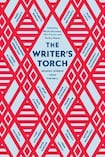
The Writer’s Torch is a rich anthology of short stories from the magazine The Bell paired with responses from contemporary writers. Edited by the scholars Phyllis Boumans and Elke D’hoker along with Declan Meade, publisher and founding editor of Stinging Fly, the dialogue between the mid-century authors and their literary descendants sheds light on Ireland at an important inflection point.
The Bell announced itself in 1940 as “A Survey of Irish life”. War and financial hardship reverberate through the early stories. In Peadar O’Donnell’s Why Blame the Seagulls (1940), the bodies of soldiers wash up on Irish shores. Elizabeth Bowen’s Sunday Afternoon (1942) features a character whose London home has been bombed in the Blitz. Children throughout the country are affected by poverty: a Co Down classroom in Michael McLaverty’s Moonshine (1941) is so cold you can see your breath; meanwhile, Olivia Manning Robertson’s Out Patients (1944) and James Plunkett’s Janey Mary (1945) concern the urban poor.
Irish nationalism is another recurring theme. In the founding editor Sean O’Faolain’s The Man Who Invented Sin (1944), a monk instructs a nun on Irish pronunciation: “Make a great big shpit inside in your mouth and gurgle it,” he counsels. ‘Please…!” she balks. “If we cannot speak our own language like ladies let us not speak it at all.” The story leads Anne Enright to recall her family, who were “mad for the Irish language”, albeit more out of a love of linguistics than nationalism. As Mary Morrissy observes of David Marcus’s Ransom (1952), which pits an IRA kidnapper against his Jewish hostage, “the real intent” of the story is “[to get these polar opposites talking and] to set out two versions of nationhood side by side”.
Some of the entries reflect nostalgia. In Bryan MacMahon’s Yung Mari Li (1944), a priest in Montana seeks out a sod of turf from his home town in Co Limerick for his parishioners to sniff. Bowen’s story reflects a “sense of loss for the fading Anglo-Irish way of life, for the charm of its ‘aesthetic of living’,” notes Danielle McLaughlin. In Moonshine, when the narrator returns for his flawed but caring schoolteacher’s funeral, he, too, feels “an elegiac sense of loss”, writes David Park.
Let’s celebrate: Nine top restaurants for your next special occasion
‘My husband is obsessed with exercise and sports ... it feels a bit like an affair’
Notions restaurant review: This is intelligent, considered food, without ceremony
Moving from Dublin to rural Ireland: ‘Every time we went away we loved all the green around us. Then we thought, let’s just go do it’
In selecting the 18 stories in the collection, the editors aimed to rebalance the “lopsided” ratio of one to seven female authors and an overweighting towards the Republic, D’hoker explains in the introduction. They have also “given preference to stories that are not often anthologised, but deserve to be rediscovered and reread”. While most of the authors respond in the form of literary criticism, Nicole Flattery and Martina Devlin choose to reply with short fiction of their own. Flattery’s narrator’s obsession over her skincare routine mirrors the neurosis of John Hewitt’s narrator in Mould (1952), while Devlin riffs on a line in Benedict Kiely’s The Enchanted Palace (1952) – ”when the world goes to war the world goes mad” – with a love story truncated by The Troubles.
“Stories are like people: they age,” writes Evelyn Conlon in her response to Kate O’Brien’s A Fit of Laughing (1952). “Some better than others.” The commentators do well in pointing out the blind spots visible to a contemporary eye without snapping to judgment, creating a conversation between past and present instead. Philomena Mullen compares Mary Beckett’s Theresa (1951) with her own experience growing up mixed-race and the realties faced by the children fathered by Black soldiers stationed in Belfast. Yan Ge’s consideration of the half-Irish, half-Chinese American character in Yung Mari Li strikes a sombre note in light of the anti-Asian violence of 2021, when “everything had become too heavy for literary interpretation”.
Like The Stinging Fly today, The Bell was instrumental in fostering and championing the Irish short story. Many of the entries prompt musings on the form. Margaret Barrington’s Fable (1951), Éilís Ní Dhuibhne observes, is “a classic epiphany-type story”, as exemplified by Joyce’s The Dead. Structurally, the same is true of Val Murkens’s Girls (1947), notes Mia Gallaher, although it is “a mistresswork of elusive non-epiphany”. Mary Lavin’s A Story with a Pattern (1946) debates what constitutes a story. “Life itself has very little plot,” the narrator remarks when a guest at a party tries to mansplain craft to her.
Philip Ó Ceallaigh reappraises Frank O’Connor, finding that the sensory descriptions of Uprooted (1942) make the world gleam “as though newly created”. A political writer such as Liam O’Flaherty, meanwhile, “uses empathy as a tactic to raise the consciousness of freedom”, notes Sean O’Reilly of The Lament (1946). The collection’s closing story, Brinsley MacNamara’s Reverie (1954) exhibits a looser prose style, writes Alan McMonagle. Better known as a novelist, MacNamara uses the narrower focus of the short story “to reach and push and ultimately risk that little bit more”.
The title of the anthology comes from an editorial written by Peadar O’Donnell, who edited The Bell from 1946 until it ceased publication in 1954. In tumultuous times, writers often turn back to the past “in order to free themselves from a temporary bewilderment”, he wrote. Similarly, the thoughtful curation and commentary of The Writer’s Torch illuminate an ever-evolving Ireland.













